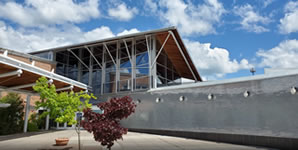Stacy Anderson grew up Brooklyn Park, Minnesota and now lives in Hibbing with her three-year-old daughter, Olivia and Alan, her significant other. She is completing LSC’s Radiologic Technology program for an AAS degree and has already earned her A. A. degree in 2016. Anderson plans to earn her bachelor’s degree in Radiologic Technology and also pursue continuing education to become certified in Computed Tomography (CT), and Magnetic Resonance Imaging, (MRI).
A simple twist of fate opened the door to her healthcare career. “Who knew that breaking my wrist at 13 would lead to a career in rad tech? I had to have X-rays and it was so interesting, the technologist was incredibly sweet, and I wanted to learn more. I was hooked. So here I am, in my second year of rad tech school living out my dreams! “
Anderson juggles many responsibilities as an employee, mom, student and partner. “I work part time as an x-ray operator at both the Grand Itasca Clinic & Hospital and Fairview Range Medical Center, while still having my school and clinical schedule demands and taking care of my family. I make sure I spend enough time with my loved ones— daughter, my boyfriend, our families and friends— maintaining my grades and finding time to study. It is hectic, but it’s become a way of life!”
Anderson has found her clinical experience hugely rewarding. “We get to work side-by-side with the professional techs in a hospital setting. Rather than just having your knowledge tested on paper, you learn how to apply your critical thinking skills to the setting. I honestly think it is the best confidence-builder when you bring all these aspects together and see that you know what you are doing.”
Anderson appreciates the depth of expertise she witnessed at her clinical site. “Do you know how much radiologic technologists actually have to know? I never realized how much knowledge these people have regarding x-rays— x-rays are made, dosage, anatomy, positioning, critical thinking skills, equipment usage— list goes on and on. I have found the hardest thing to learn has been the physics of X-rays, that is, the actual image production. It’s so much easier to understand once you apply it in your clinical setting.”
Diagnostic imaging is a growing field, rapidly changing due to technology, with a steady demand for technologists. Anderson notes that imaging has so many different modalities, including CT, MRI, interventional radiology, mammography, nuclear medicine, and DEXA (bone densitometry), that offer areas for professional specialization. She offers sound advice for anyone considering a hands-on healthcare career. “Do a job shadow, and ask a lot of questions. Make sure you want to work with patients every single day, and that you are passionate about the medical field and you won’t work a day in your life.”



